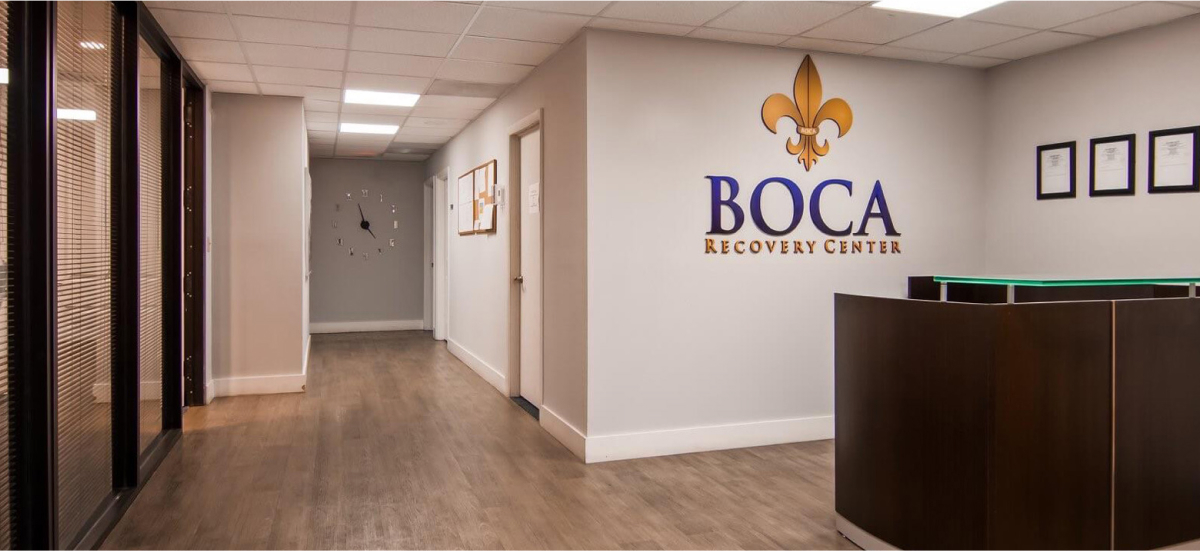Alcohol withdrawal syndrome is a medical condition that can be life-threatening, especially for people with long-term and intense alcohol abuse, dependence, and addiction.
Alcohol withdrawal symptoms can be life-threatening, so medical detox services are highly recommended.
You can undergo alcohol detox in a hospital under 24/7 medical care, supervision, and monitoring to ensure your safety. Your treatment team will administer medications like benzodiazepines to manage your symptoms. This treatment may affect the alcohol withdrawal timeline.
What Is Alcohol Withdrawal?
Alcohol withdrawal is a condition that occurs when someone who drinks alcohol on a regular basis suddenly stops consuming it. This process can trigger a range of uncomfortable, painful, and even life-threatening symptoms.
Most long-time drinkers will experience at least a few withdrawal symptoms when they try to quit cold turkey. Those symptoms could be classified as mild, moderate, or severe.
Three classifications of alcohol withdrawal symptoms exist, which are as follows:
Mild symptoms
Anxiety, insomnia, GI upset, tremors, headaches, twitching, elevated blood pressure, and heart palpitations are among the symptoms an expert considers mild.
Moderate symptoms
Hallucinations and withdrawal seizures are considered moderate symptoms. Around 30% to 40% of people who have a seizure will progress to delirium tremens.
Severe symptoms
Delirium tremens is considered the most severe type of alcohol withdrawal. It’s characterized by visual hallucinations, severe autonomic dysfunction, confusion, seizures, rapid heart rate, agitation, excessive sweating, and abnormally high body temperature
Alcohol Withdrawal Timeline
Everybody is different, as is every withdrawal timeline. However, researchers say that most long-term drinkers move through a predictable series of symptoms when they try to quit.
The two stages include the following:
Acute
Alcohol withdrawal symptoms emerge within 4-12 hours after stopping drinking. Acute symptoms peak in intensity during day 2 and typically start to improve by day 4 or 5.
Post-Acute
Protracted withdrawal symptoms like insomnia, anxiety, and autonomic dysfunction may last for up to six months.
A typical alcohol withdrawal symptoms timeline looks like this:
| Time Since Last Drink | Withdrawal Symptoms | Intensity |
|---|---|---|
| 4-12 hours | Insomnia, tremors, anxiety, nausea, heart palpitations, increased blood pressure | Mild |
| 12-48 hours | Hallucinations, delusions, seizures, agitation, tremors, confusion | High, peak intensity |
| 4-5 days | Sleep disturbances, alcohol cravings, anxiety, depressed mood | Moderate/mild, symptoms start to improve and disappear |
| 3-6 months | Insomnia, anxiety, autonomic dysfunction | Mild, fluctuating |
This withdrawal timeline is for individuals who quit drinking cold turkey without professional detox treatment or medical oversight. This is how your body will naturally progress through alcohol withdrawal, without medications or care.
However, everyone’s alcohol detox timeline is different, and many factors affect the duration.
Severe Symptoms & Medical Risks
Two of the most severe symptoms that can occur during alcohol withdrawal are seizures and delirium tremens. Let’s take a closer look at both.
Alcohol Withdrawal Seizures
Alcohol works by altering GABA — a neurotransmitter that exists within the brain. When people drink, their brains don’t respond to GABA normally, and they feel sedated and calm. When they’re sober, GABA responses return to normal.
With alcohol use disorder (AUD), GABA responses just never return to normal.
The brain is always slightly sedated, and the body is always trying to return to normal. When the balance is disrupted, seizures can occur.
Researchers say that the prevalence of seizure disorders in people with alcohol use disorders is about triple the amount seen in the general population. A typical alcohol withdrawal seizure is a tonic-clonic seizure (also called a grand-mal seizure).
This episode involves a loss of consciousness accompanied by violent muscle spasms. Some people can experience smaller episodes that don’t seem like full-body seizures.
About half of all people with alcohol withdrawal will have two to four seizures within the six hours that follow the first. Without prompt treatment, these episodes can be life-threatening.
Binge Drinking Seizures
During binge drinking episodes, people can become dehydrated, making seizures worse.
Seizures during binge drinking are especially dangerous and common in people with underlying seizure disorders, such as epilepsy. In one study of people with epilepsy, seizure worsening caused by alcohol was reported by more than 18% of people.
Chronic Drinking Seizures
Chronic drinkers experience profound brain changes. When they quit or try to cut back, they can experience seizures. They typically begin between 6 to 48 hours after quitting drinking.
How to Spot an Alcohol-Induced Seizure
Seizures are dramatic, and they’re often hard to ignore. Knowing what they look like is critical, as you must get the person help immediately.
A tonic-clonic seizure, which is most common with alcohol abuse, can cause the following symptoms:
Crying out or verbalizing
Falling to the ground
Losing consciousness
Jerking arms and muscles
Take these steps to help someone having an alcohol seizure:
Keep them safe
Help them to the floor, and turn them on their side. This ensures they don’t choke if they vomit. Put something soft, like a jacket, under their head.
Stay to help
Don’t leave the person alone. Remain by the person’s side until they awaken.
Orient the person
Tell them what happened using a calm voice.
Stay calm
While watching the seizure is difficult, try not to panic.
Since alcohol-induced seizures often repeat, consider this a medical emergency. Call 911 and tell the operator you think the person is experiencing an alcohol seizure. Ask what you should do until help arrives. The emergency operator will often direct you on further steps to take.
Delirium Tremens
Delirium tremens (DTs) is the most severe form of alcohol withdrawal that an individual can experience. It occurs when someone who has a moderate to severe alcohol use disorder suddenly quits drinking altogether.
Consuming alcohol over the long term has a depressing effect on the central nervous system (CNS). In response, the CNS increases its own activity to counteract this effect.
During alcohol withdrawal, this back-and-forth balance is abruptly disrupted. You can think of it like a tug of war between your body and alcohol, and the alcohol side immediately going slack. Your CNS is still working overtime and needs time to regulate and lower its activity level. When this occurs, it throws your body’s automatic processes off-kilter, which can lead to painful and life-threatening symptoms.
An estimated 1.8% of people with alcohol use disorder (AUD) will develop DTs. The mortality rate can reach up to 37%, and it’s highest among people who try to go through the process unsupervised.
What Are the Other Causes of Delirium Tremens?
There are other potential causes of DTs, so it does not necessarily always start with an intentional cessation of alcohol use. DTs may be due to inadequate food intake as well as more overt factors, such as head injury, infection, or illness.
However, the conditions only occur in those who also have a physical and psychological dependence on alcohol.
Delirium Tremens Risk Factors
Many factors can increase the risk of experiencing DTs such as acute medical conditions, heavy alcohol intake, a history of DTS, advanced age, liver dysfunction, and severe withdrawal syndrome.
It is more common in individuals who consume up to four pints of wine daily, seven to eight pints of beer (3.3 to 38 liters), or a half-liter of hard liquor every day for several months. It is also more common in people who have consumed alcohol for more than 10 years.
Timeline for Delirium Tremens
Although each person’s experience may be different, most people experience delirium tremens within 48 to 96 hours after their last drink. Some people have a rapid onset of symptoms that includes a combination of intense neurological and psychotic symptoms, such as trembling, hallucinations, confusion, disorientation, and restlessness.
Immediate medical attention is crucial for managing DTs. Close monitoring, medication, restoring fluid and electrolyte balance, and providing supportive care are necessary to ensure safety.
Signs and Symptoms of Delirium Tremens
If you have AUD, don’t attempt to suddenly stop drinking on your own. You need medical supervision and support to ensure you stay safe due to the risk of DTs.
Below are the symptoms that usually accompany this condition, broken into the initial, acute, and peak withdrawal phases:
Initial Symptoms (Begin 6 to 48 hours after the last drink)
Restlessness, anxiety, irritability, tremors, sweating, rapid heartbeat, nausea, and insomnia characterize the initial withdrawal period.
Acute Symptoms (Begin 48 and 72 hours after the last drink and continue for up to five days)
Intense confusion, disorientation, agitation, hallucinations (auditory, visual, or tactile), extreme sensitivity to light and sound, severe tremors, elevated heart rate and blood pressure, fever, sweating, and dehydration.
Peak Symptoms (Begin two to five days after the last drink, but can take up to 10 days to start)
Severe confusion, disorientation, vivid and frightening hallucinations, severe tremors, extreme agitation, severe sensitivity to light and sound, increased heart rate and blood pressure, fever, profuse sweating, dehydration, and possible seizures.
Subsiding Symptoms (Begin within five to seven days after the onset of DTs)
Hallucinations, confusion, and tremors, persisting fatigue and irritability.
Can Delirium Tremens Be Prevented or Reversed?
Yes, delirium tremens can often be prevented and managed with medical detox. In a comprehensive treatment program, you’ll have professional support during alcohol withdrawal, and this involves medications and therapy.
Delirium tremens can also be treated and reversed with prompt treatment. The symptoms of delirium tremens can be controlled medically before they become a serious problem, as long as they are caught early enough.
Damage from DTs will depend on how quickly treatment is provided. In some cases, DTs can have long-term effects on mental or cognitive health. While these effects can be treated, continued treatment is sometimes necessary.
Hallucinations and Cardiovascular Risks
Alcohol withdrawal can cause visual hallucinations and a distorted perception of reality that affects one’s response to people and situations. You may also experience physical manifestations of agitation, including an increased heart rate, excessive sweating, and heart palpitations. These problems can be fatal on their own, or they may exacerbate an underlying medical condition.
The Dangers of Quitting Cold Turkey
Technically, some people with a mild alcohol addiction or dependence may be able to quit drinking cold turkey without any complications or dangers. However, medical professionals do not recommend quitting drinking on your own without professional assistance.
This is because abruptly stopping or reducing your alcohol consumption will lead to acute alcohol withdrawal symptoms, which can range from mild to severe and life-threatening. Grand mal seizures are the most risky symptom of alcohol withdrawal.
Instead of quitting alcohol cold turkey, experts recommend entering a medical detox program that provides 24/7 care and supervision. Treatment teams can use medications to reduce the risk of severe complications (like seizures), and they can adjust your treatment plan if your condition worsens. At the end of detox, your team can help you enroll in rehabilitation programs to help you learn how to maintain your sobriety for a lifetime.
If you’ve already tried quitting alcohol cold turkey and you’re developing symptoms like hallucinations, delirium, and extreme agitation, you need medical attention. Go to an emergency room immediately and ask for help.
The more severe your alcohol dependence, the more difficult and potentially dangerous quitting cold turkey is going to be. For this reason, always talk to a doctor so you can at least make an informed decision about your next steps.
Symptoms of Quitting Cold Turkey
If you are dependent on or addicted to alcohol and suddenly stop drinking, you’ll experience distressing and potentially dangerous alcohol withdrawal symptoms, such as:
Irritability
Anxiety
Restlessness
Insomnia
Confusion
Tremors and shakiness
Nausea and vomiting
Rapid pulse
Sweating
Hallucinations
Seizures
Some people develop mild withdrawal symptoms that develop within about six hours and don’t progress within the next 24 to 48 hours. However, others develop very serious alcohol withdrawal complications within 12 to 24 hours of quitting drinking, including seizures.
Below is a typical timeline of acute withdrawal without medical intervention or alcohol withdrawal medications.
| Time Since Last Drink | Withdrawal symptoms | Severity |
|---|---|---|
| 4-12 hours | Nausea, headache, anxiety, insomnia | Mild |
| 2 days | Shakes, hand tremors, hallucinations, seizures | Severe, symptoms peak in intensity |
| 4-5 days | Insomnia and anxiety | Mild then dissipate |
| Weeks to months | Mild then dissipate | Mild but may fluctuate |
Dangers & Risks of Cold Turkey Detox for Alcohol Use Disorder
Some notable dangers and risks of quitting cold turkey include the following:
The serious discomfort combined with little support greatly increases the odds of giving up or relapsing.
You may avoid potentially better available treatments with no real advantage, even if the cold turkey approach still works for you.
You are at risk for delirium tremens, which is a form of withdrawal that causes sudden and severe mental or nervous system changes that can be life-threatening.
Even if your alcohol withdrawal symptoms aren’t life-threatening, they can be unpleasant enough that you return to drinking to alleviate them. This can contribute to an uncontrollable cycle of alcohol withdrawal and relapse that worsens your dependence and alcoholism.
Medical Detox vs. Self-Detox
Even with an assessment, doctors aren’t able to say with certainty that a person is safe to quit drinking cold turkey. That’s why going through alcohol detox in a hospital or 24/7 detox facility is so important.
The safest approach to quitting alcohol is to seek out medical detox, which involves around-the-clock medical care, supervision, and monitoring. SAMHSA recommends medical detox for alcohol withdrawal in an inpatient setting due to the unpleasant and risky nature of alcohol withdrawal.
If you are thinking of quitting drinking, you can receive medical detox services in several settings, such as:
Psychiatric hospital
Acute care hospital
A freestanding alcohol detox program
Medical detox within an inpatient rehab
Alcohol detox begins with an assessment and physical examination. Your doctor will find out how much you typically drink, when you had your last alcoholic beverage, and whether you have underlying health conditions (like heart disease) that could complicate your recovery.
Then, your team will assess you to determine your next steps. Your care team will look for symptoms of withdrawal and rank their severity. If your symptoms are mild, your team might offer supportive treatments (like fluid therapy and multivitamins). If your symptoms are severe, they can use benzodiazepine medications to ease them.
When your condition has been stable for several days, your team will slowly lower your medication dose until you’re taking none at all. At that point, you can transfer to a rehab program to learn more about preserving your sobriety.
While medical detox can help you obtain medical stability and safely go through withdrawal, it doesn’t facilitate the behavioral change necessary for long-term sobriety. But at an alcohol addiction treatment program, you can benefit from therapy, counseling, support groups, and more.
How Long Does Alcohol Detox Take?
How long it takes to detox from alcohol depends on many factors like how severe your dependence is, previous withdrawal experiences, whether you receive detox medication or not, and more.
Phases of Detox
If you quit alcohol on your own, the alcohol withdrawal timeline looks like this:
Symptoms emerge within 6-12 hours of the last drink
Symptoms peak within 1-3 days
Symptoms start to resolve within 4-5 days
Alcohol detox timeline, severity, and symptoms depend on many factors, such as:
How much you typically drink
How often you drink
How long you have been drinking
Whether you mix alcohol with other substances
The presence of underlying medical or mental health conditions
Previous alcohol detox experiences
Individual physiology
Liver functioning
Age
Acute vs. Extended Withdrawal
It will generally take a few days to a week for acute alcohol withdrawal symptoms to resolve although some protracted withdrawal symptoms can linger for weeks, months, or even years.
Medical detox, which involves 24-hour medical supervision, care, and monitoring in a hospital setting, is the safest way to undergo alcohol withdrawal. This type of care can help prevent and treat complications.
Although medical detox can benefit anyone at risk of alcohol withdrawal, experts strongly recommend inpatient or hospital settings for those:
Without a support system
With abnormal lab results
Suicidal thoughts or behaviors
Polysubstance abuse
Co-occurring psychiatric conditions
High risk of delirium tremens
History of withdrawal seizures
No matter how or where you go through alcohol detox, it’s essential to have a strong and sober support system—of family, friends, and fellow people in recovery—to provide you with emotional support, empowerment, and encouragement during this tough time.
Who Is At Risk for Severe Withdrawal?
There are certain risk factors for life-threatening or complicated alcohol withdrawal symptoms like seizures or delirium tremens (DTs). These include:
History of DTs or withdrawal seizures
Drinking heavily every day
Electrolyte imbalances
Severe dehydration
Abnormal liver functioning
Brain lesions
Co-occurring medical conditions
That said, even if you don’t have any of the above risk factors for DTs or withdrawal seizures, that doesn’t mean that you won’t develop dangerous withdrawal symptoms.
Even with an assessment, doctors aren’t able to say with certainty that a person is safe to quit drinking cold turkey. That’s why going through alcohol detox in a hospital or 24/7 detox facility is so important.
Previous alcohol detox experiences and withdrawal episodes may increase the risk of experiencing severe alcohol withdrawal symptoms, such as seizures.
This is due to “kindling,” which may be caused by pathways in the brain that have been primed for withdrawal and are more sensitive to withdrawal episodes. Kindling causes a person to experience worse withdrawal symptoms every time they quit
When to Seek Help
If you suspect someone is at risk of a serious alcohol withdrawal condition like DTs, seek emergency medical care immediately. Symptoms can be life-threatening, so you need professional support and supervision.
Dehydration, heart problems, seizures, and breathing problems can all occur due to DTs. These problems can be fatal on their own, or they may exacerbate an underlying medical condition.
Emergency Signs
All cases of alcohol withdrawal can become very serious very quickly. Experts say everyone going through withdrawal should get medical help—no matter if symptoms are mild or severe.
Some symptoms are so serious that they require help from EMTs and a trip to the hospital in an ambulance. Those signs include the following:
Fever
Convulsions
Panic
Hallucinations
If someone develops these signs, call 911 and tell the operator about what you’re seeing. Stay with the person until help arrives, and follow the operator’s instructions.
Professional Treatments
Depending on where you are in the process, different medical treatments may be more or less appropriate, but your journey should begin with a consultation with a medical professional as soon as possible.
Some of the medical treatments that may be used to treat DTs include the following:
Medical Monitoring
Close supervision and support are essential because symptoms can worsen unexpectedly or result in a medical emergency that requires immediate intervention.
Hydration
Intravenous fluids may be a necessary part of treatment to balance electrolytes and maintain hydration throughout the process.
Nutritional Support
Proper nutrition through supplements or a balanced diet is another component of healthy recovery that will be provided in the medical setting.
Psychosocial Support
Therapy, counseling, and support groups can help to boost emotional well-being once you have reached stability in the withdrawal process.
Comprehensive Treatment for AUD
Once you are through alcohol detox, treatment is not done. You need comprehensive addiction treatment to address the root issues that led to your alcohol abuse. Without this kind of comprehensive care, relapse is likely as well as all the associated risks.
Treatment and Support Options
If you or someone you know is suffering from alcohol use disorder (AUD), there are comprehensive treatment options available. Most treatment plans begin with inpatient medical detox and gradually taper off the level of supervision required as you recover.
Inpatient Detox
If you are struggling with alcohol use and want to quit, Boca Recovery Center’s inpatient medical detox program can provide you with the around-the-clock medical care, supervision, and monitoring you need to detox safely and comfortably.
Once you are medically stabilized and finish detox, you can begin treatment in an inpatient or outpatient setting, where you will receive a variety of interventions like individual therapy, group counseling, and medication-assisted treatment (MAT).
Medication-Assisted Treatment
Most often, you’ll be prescribed a benzodiazepine like lorazepam or diazepam to manage alcohol withdrawal. These medications manage tremors and agitation, helping to prevent progression to severe withdrawal symptoms. Individuals are then gradually weaned off these medications.
Medications like acamprosate, naltrexone, and disulfiram are approved by the FDA to manage AUD. In addition, you may be prescribed additional medications to manage certain symptoms, such as to manage anxiety or seizures.
Aftercare Planning
Once you’ve gone through the alcohol withdrawal process, it’s important to manage post-acute withdrawal symptoms to prevent the risk of relapse. You can do this by following an aftercare plan that includes support methods, such as:
12-step groups like Alcoholics Anonymous (AA)
Non-12-step groups like SMART Recovery
Sober living
Ongoing group counseling
Ongoing individual therapy
Step-down care like a partial hospitalization program or intensive outpatient program
Vocational classes
Drug education or relapse prevention classes
Withdrawal from Alcohol Safely With Us
Getting help for an alcohol use disorder is easier and more effective than you might imagine. You can start by speaking with your doctor or contacting a reputable alcohol detox program and enrolling.
At Boca Recovery Centers, we offer a range of programs and treatment options at our convenient rehab locations in Indiana, Florida, Massachusetts, and New Jersey. You can begin your journey with medical detox, and then transition into inpatient or outpatient care as required.
Contact us today to get started on your recovery journey.
- Alcohol Withdrawal. (September 2021). StatPearls.
- Diagnostic and statistical manual of mental disorders (5th ed.). American Psychiatric Association. (2013).
- PAWSS: Validation of the Prediction of Alcohol Withdrawal Severity Scale. (2019). Rowan University.
- Diagnosis and Treatment of Acute Alcohol Intoxication and Alcohol Withdrawal Syndrome: Position Paper of the Italian Society on Alcohol. (2019). Internal and Emergency Medicine.
- Post-Acute Withdrawal Syndrome (PAWS). SEMEL Institute for Neuroscience and Human Behavior.
- Detoxification and Substance Abuse Treatment: A Treatment Improvement Protocol TIP 45. Substance Abuse and Mental Health Services Administration.
- Delirium Tremens: Assessment and Management. (December 2018). Journal of Clinical and Experimental Hepatology.
- What Is the Mortality Rate for Delirium Tremens? (November 2020). Medscape.
- Use of Phenobarbital in Alcohol Withdrawal Management: A Retrospective Comparison Study of Phenobarbital and Benzodiazepines for Acute Alcohol Withdrawal Management in General Medical Patients. (September 2019). Psychosomatics.
- Alcohol Withdrawal Syndrome. (August 2022). American Academy of Family Physicians.












